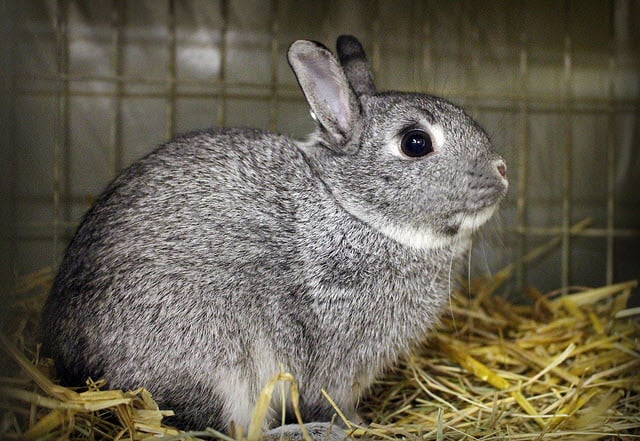
Breed facts
Size
2,26-3,17 kg
Look
Erect ears and a plump body. Soft, short to medium-length fur.
Temperament
Incredibly calm and docile. Enjoys being held and pet.
Care requirements
Needs enough room to stretch and play.
Behavior With Children
Excellent breed for children. They are very calm and love being held.
Health Concerns
Particularly susceptible to overgrown teeth and ear mites.
Life expectancy
5–8 years
Breed facts
Size
2,26-3,17 kg
Look
Erect ears and a plump body. Soft, short to medium-length fur.
Temperament
Incredibly calm and docile. Enjoys being held and pet.
Care requirements
Needs enough room to stretch and play.
Behavior With Children
Excellent breed for children. They are very calm and love being held.
Health Concerns
Particularly susceptible to overgrown teeth and ear mites.
Life expectancy
5–8 years
Breed facts
Size-4 to 7,5 kg
Temperament-calm and friendly with a playful personality
Grooming-they need to be groomed frequently due to their long, double coat that mats easily
Behavior with children-they get along very well with children and babies due to their kind, friendly, and fun personality
Health Concerns-Brachycephaly-it is a malformation of the skull due to their breeding; heart disease, eye issues (caused by eye irritations and excess discharge); hair issues (they don't have fur, they have long hair with can tangle easily); ear issues( ear infections); skin sensitivity (allergies) and they also might develop a stomach sensibility due to their selective appetite
Life expectancy-10 to 16 years (the oldest recorded Shih Tzu has lived 23 years)
Wild rabbits were crossed with Beverens and the Himalayans to create this breed. The breed's distinct coat color made it popular, particularly in the United States. Its calm demeanor makes it an excellent companion breed. Breeders eventually began to produce larger Chinchilla rabbits, resulting in the creation of the American and Giant Chinchillas.
Chinchilla rabbits are a group of three rabbit breeds that have been bred for a coat that resembles that of chincillas.Despite their name, they are not related to and cannot interbreed with chinchillas, which are a species of rodent. Rabbits are lagomorphs.
Despite the evolutionary relationship between lagomorphs and rodents, the two orders have some major differences: primarily, lagomorphs have four incisors in the upper jaw, whereas rodents only have two.
Also, lagomorphs are almost strictly herbivorous, unlike rodents, many of which will eat both meat and vegetable matter.
They are similar to rodents in that their incisor teeth grow continuously throughout their lives, thus necessitating constant chewing on fibrous food to prevent the teeth from growing too long.
Lagomorphs have no paw pads, instead the bottoms of their paws are entirely covered with fur.
Similarly to the rodents, bats, and some mammalian insectivores, they have a smooth-surfaced cerebrum.
Lagomorphs are unusual among terrestrial mammals in that the females are larger than males. This is extremely rare among terrestrial mammals.
A mutation diluted the yellow pigment in the hairs to almost white, changing in this way the color of the fur of the wild rabbit (agouti) into chinchilla.
Wild rabbits were crossed with Beverens and the Himalayans to create this breed. The breed's distinct coat color made it popular, particularly in the United States. Its calm demeanor makes it an excellent companion breed. Breeders eventually began to produce larger Chinchilla rabbits, resulting in the creation of the American and Giant Chinchillas.
Chinchilla rabbits are a group of three rabbit breeds that have been bred for a coat that resembles that of chincillas.Despite their name, they are not related to and cannot interbreed with chinchillas, which are a species of rodent. Rabbits are lagomorphs.
Despite the evolutionary relationship between lagomorphs and rodents, the two orders have some major differences: primarily, lagomorphs have four incisors in the upper jaw, whereas rodents only have two. Also, lagomorphs are almost strictly herbivorous, unlike rodents, many of which will eat both meat and vegetable matter. They are similar to rodents in that their incisor teeth grow continuously throughout their lives, thus necessitating constant chewing on fibrous food to prevent the teeth from growing too long.
Lagomorphs have no paw pads, instead the bottoms of their paws are entirely covered with fur.
Similarly to the rodents, bats, and some mammalian insectivores, they have a smooth-surfaced cerebrum.
Lagomorphs are unusual among terrestrial mammals in that the females are larger than males. This is extremely rare among terrestrial mammals.
A mutation diluted the yellow pigment in the hairs to almost white, changing in this way the color of the fur of the wild rabbit (agouti) into chinchilla.



